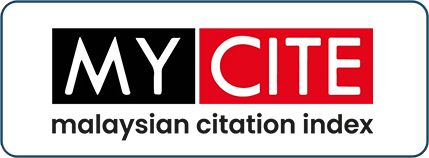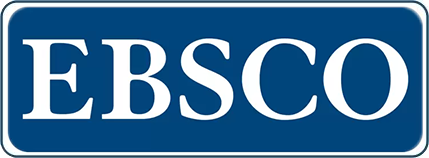E-Wallet: A Study On Contracts Involved Within Its Operational Mechanism
DOI:
https://doi.org/10.33102/jfatwa.vol26no1.382Keywords:
e-wallet, financial technology, investment, method, operation, usuryAbstract
The use of digital wallet or also known as e-wallet is widely spreading across world and specifically among Muslim in Malaysia without people actually knowing and understanding the operational mechanism of an e-wallet. Research has shown that the advancements in term of technology that are brought by e-wallet claimed to give a lot of benefits and advantages towards its users. E-wallet have the ability to make transactions easier, faster and quicker than before. The use of e-wallet also creates improvements in payments, portability, and cashless transaction. This study aims to identify the concept of e-wallet in term of its definition, operational mechanism and the contracts that are involved within e-wallet. The main instrument used for data collection was journals, library research and Internet. The construction of the instrument is the result of modification of the instruments that have been used by previous researchers and researchers’ own design based on the objectives to be achieved. The result shows the right concept of an e-wallet based on its definition as electronic money is a payment instrument that contains monetary value that is paid in advance by the user to the e-money issuer. The user of e-money can make payments for purchases of items and services to vendors who offer the e-money as payment. Besides, writer also finds the contracts involved within an e-wallet namely, wadi’ah contract and qardh contract. The results indicate that e-wallet operational mechanism is not contradict and in accordance to Sharia, hence allowed and permissible. However, further research is needed to identify other factors that could strengthen the effectiveness of this study.
Downloads
References
Al-Quran.
Abu Daud Sulayman Ibn al-Ash’ath Ibn Ishaq al-Azdi al-Sijistani. Sunan Abu Dawud. Kaherah: Darul Risalah al-Alamiyah. 3(3508).
al-‘Asqalani, Ahmad bin Ali bin Hajar. (1959). Fath al Bari fi Sharh Sahih al-Bukhari. Riyadh: Darul Kutub as-Salafiah. 1(3). 495.
Brandon Gaille. (2018). 13 Electronic Wallets Advantages and Disadvantages. Brandongaille Small Business & Marketing Advice. Retrieved from https://brandongaille.com/13-electronic-wallets-advantages-and-disadvantages
Cambridge Dictionary. (2019). Digital wallet. Retrieved from https://dictionary.cambridge.org/dictionary/english/digital-wallet
Hem Shweta Rathore. (2016). Adoption of Digital Wallet by Consumers. p. 69.
Jacie Tan. (2019). E-Wallet Basics: What All Malaysians Should Know. Retrieved from https://ringgitplus.com/en/blog/e-wallet/E-Wallet-Basics-What-All-Malaysians-Should-Know.html
Mudhakkir Abdul. (2016). The Concept of Money in Islamic Economics. Retrieved from https://www.linkedin.com/pulse/concept-money-islamic-economics-mudhakkir-abdul-cife-
Muhammad Aunurrochim Mas'ad. (2018). Analisa Syariah Terhadap Konsep dan Jualan Lelong Secara Bisik: Kajian Kes Pasar Bisik Kuala Muda Kedah. Ulum Islamiyyah. The Malaysian Journal of Islamic Sciences. Nilai: USIM Press. 24(064), 56-68.
Muhammad Ridwan Firdaus. (2018). E-Money Dalam Perspektif Hukum Ekonomi Syariah. p. 145
n.a. (2019). “Definition of E-wallets”. The Economic Times. Retrieved from https://economictimes.indiatimes.com/definition/e-wallets .
Navanwita Sachdev. (2019). The Evolution of E-wallets: History, Benefits and Withdrawals. Retrieved from https://sociable.co/mobile/evolution-ewallets-history-benefits-withdrawals
Olsen, Mia & Hedman, Jonas & Vatrapu, Ravi. (2011). E-Wallet Properties. 10.1109/ICMB.2011.48. 158-165.
al-Qaradawiy, Yusuf. (1999). The Lawful and The Prohibited in Islam (Al-Halal wal Haram fil Islam). Plainfield, Indiana. American Trust 253. Publication.
Rob von Behren & Jonathan Wall. (2016). Digital Wallet. p. 1.
Saturna Capital. “Halal Investing”. (n.d.). Saturna Capital Values-Based Global Asset Managers. Retrieved from https://www.saturna.com/amana/halal-investing.
Syed Ahmad Hashmi, Bilal Aziz, Ahmad Farhan & Asyraf Azahar. (2014). Prohibited Elements in Islamic Commercial Law.
Downloads
Published
Issue
Section
License
Copyright (c) 2021 Muhammad Aunurrochim, Adib

This work is licensed under a Creative Commons Attribution 4.0 International License.
The copyright of this article will be vested to author(s) and granted the journal right of first publication with the work simultaneously licensed under the Creative Commons Attribution 4.0 International (CC BY 4.0) license, unless otherwise stated.















